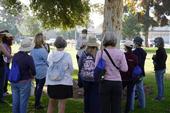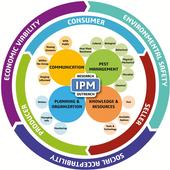- (Public Value) UCANR: Protecting California's natural resources
- Author: Kimberly C Ingram

Social Media Summary
Protecting...
- Author: Niamh Quinn
A UCCE advisor's short, effective communications on rodent management techniques helped San Diego County nurseries prevent crop losses and excess labor costs and pesticide use.
The Issue
Rodents are known to cause extensive damage to different agricultural crops worldwide. In San Diego County, nursery and cut flower products account for the commodity with the highest reported dollar value and the highest dollar value per acre. In 2020, nursery and cut flower products had a total reported value of $1,274,784,274 and accounted for 70% of San Diego's agricultural commodities. Rodents have been reported to not only directly damage nursery crops by chewing directly on ornamental trees, seeds,...
- Author: Beatriz Nobua-Behrmann

UC ANR program trains volunteers to accurately identify and report infested trees, protecting forests and encouraging civic engagement through participatory science.
The Issue
Invasive pests are one of the main threats to our urban and natural forests. Tiny beetles, like the invasive shothole borers (ISHB), attack trees and cause their decline and death. Even though ISHB can have devastating effects to urban and natural forests throughout Southern California, many trees can still be saved with proper management, allowing infested areas to recover over time. Detecting infestations early is key for successful management of this pest and to prevent spread to new areas.
Participatory science can...
- Author: Surendra K. Dara

Adapted IPM Model from former UC ANR faculty is offered in multiple languages leading to potential profit increases of $1.79 million.
The Issue
Numerous endemic and invasive pests threaten all kinds of crops, and the application of synthetic pesticides is the most common control option in many cases around the world. Frequent application of pesticides leads to pest resistance, secondary pest outbreaks, increased risk of environmental and human health, and negatively impact sustainable crop production efforts both in the short-term and long-term. Integrated pest management (IPM) is a concept of pest...
- Author: Ali Montazar

UC ANR research helps Southern California farmers conserve water by an average of 15% and encourages others to make region-specific crop management and irrigation decisions, contributing to UC ANR's public value of protecting California's natural resources.
The Issue
Water scarcity will become a more significant concern in the Colorado River Basin due to altered weather patterns and multi-year droughts. Knowledge of the evapotranspiration (ET) of crops produced in Southern California will be critical to better managing limited water resources. Accurate information on crop water use and crop coefficient (Kc) is an immediate need for on-farm water conservation...



